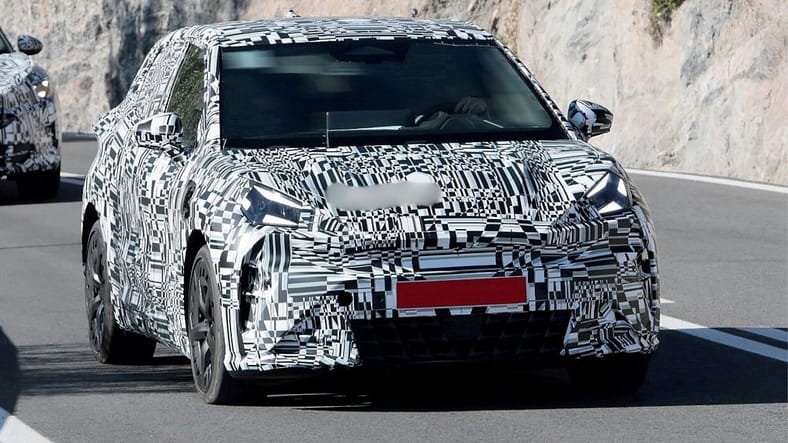The Cupra Raval, a compact electric hatchback, has been spied testing in Spain, signaling its upcoming production. Originally revealed as the UrbanRebel concept in 2021, the Raval has undergone design refinements and is now expected to hit the market in 2025.
Sharing its underpinnings with the Volkswagen ID.2, the Raval will be built at SEAT’s Martorell plant in Spain. Based on the spied prototypes, the Raval features a sporty and aggressive design language, with sharp lines, bold proportions, and distinctive lighting elements.
The front fascia is characterized by a large, closed off grille with integrated LED headlights and a prominent Cupra logo. The side profile showcases sculpted body lines, a raked roofline, and stylish alloy wheels. The rear features a sculpted tailgate, wraparound LED taillights, and a diffuser like element.
The interior of the Raval is expected to offer a modern and tech-focused cabin, with a large touchscreen display, digital instrument cluster, and premium materials. The infotainment system is likely to be based on Volkswagen Group’s latest software, offering a wide range of features and connectivity options. The Raval is also expected to feature advanced driver assistance systems, such as adaptive cruise control, lane keeping assist, and automatic emergency braking.
While the exact specifications of the Raval remain under wraps, it is anticipated to offer a range of electric powertrain options, including a high-performance dual-motor setup. The Raval is likely to offer a competitive range and charging capabilities, making it a practical and efficient choice for daily commuting and longer journeys.
The Raval is expected to compete with other compact electric hatchbacks such as the Hyundai Kona Electric and the Kia Niro EV. With its stylish design, advanced features, and expected performance, the Raval has the potential to become a popular choice in the growing electric vehicle market.
The Cupra Raval, a forthcoming electric hatchback, is set to offer a more sporty and premium experience compared to its Volkswagen ID.2 counterpart. With a distinctive exterior design featuring a rear diffuser-like bumper, a larger front grille, and triangular headlights, the Raval is expected to appeal to those seeking a more dynamic driving experience. While the exact power output remains undisclosed, it is likely to match or surpass the maximum output rating of the ID.2all concept.
Priced higher than the ID.2, the Raval is expected to start at around 27,910 dollars, reflecting its enhanced features and sportier appeal. Given the pricing difference, there is speculation about the possibility of crossover versions for both the ID.2 and Raval in the future. Regarding battery specifications, the Raval is anticipated to offer two battery options: a 38-kWh pack and a 56-kWh pack.

The larger battery is expected to provide a driving range of approximately 440 kilometers (273 miles) under the WLTP combined test cycle. While the specific chemistry of the larger battery remains unknown, the smaller battery will utilize LFP prismatic cells.
Additionally, the Raval is expected to feature advanced driver assistance systems, including adaptive cruise control, lane keeping assist, and automatic emergency braking. These features are designed to enhance safety and comfort during driving. Furthermore, the Raval is likely to offer a range of connectivity features, such as smartphone integration, wireless charging, and over the air software updates.
The Cupra Raval promises to deliver a blend of sporty performance, premium features, and electric efficiency. With its distinctive design and advanced technology, the Raval is poised to attract drivers seeking a more engaging and sophisticated electric vehicle experience.

